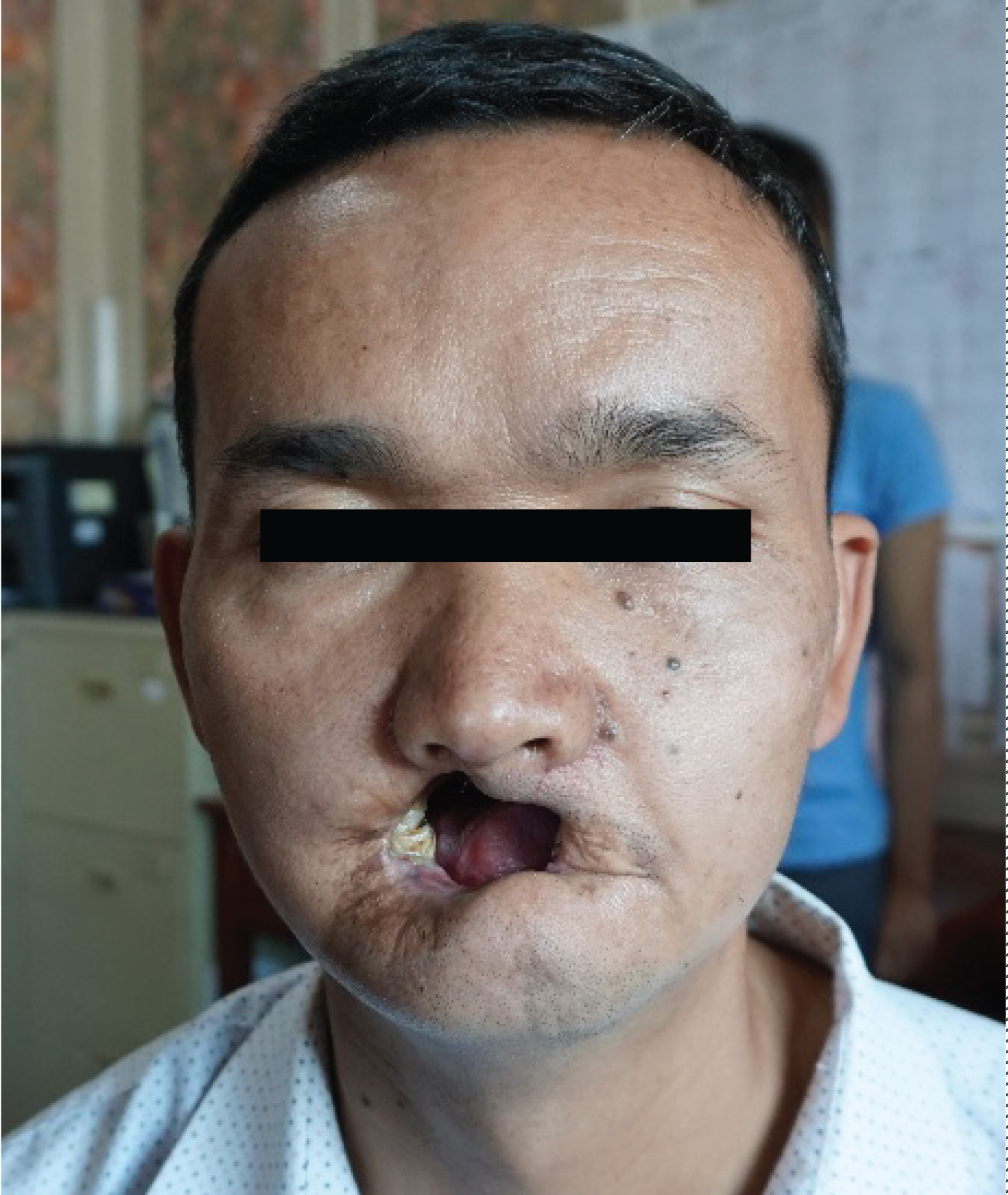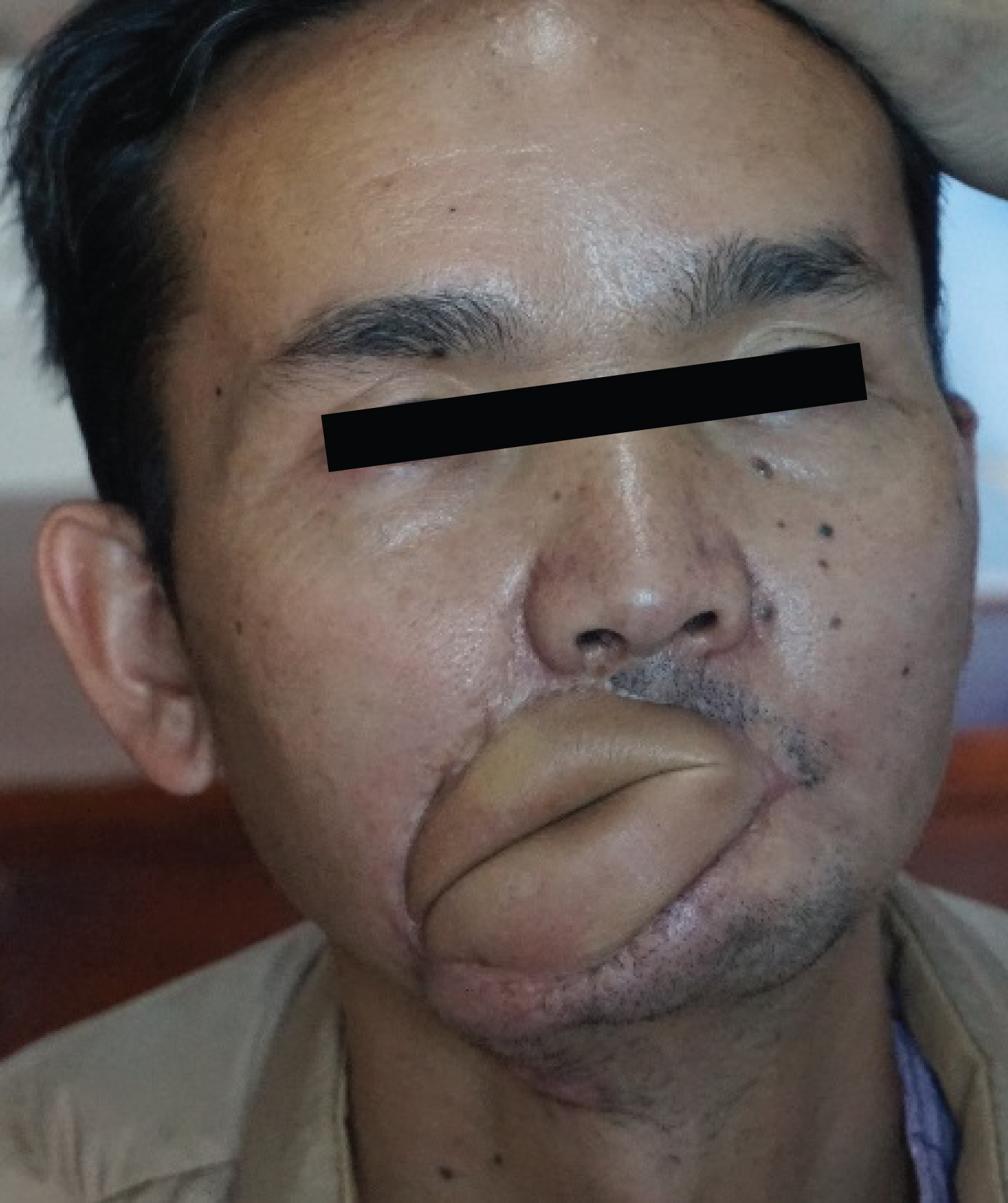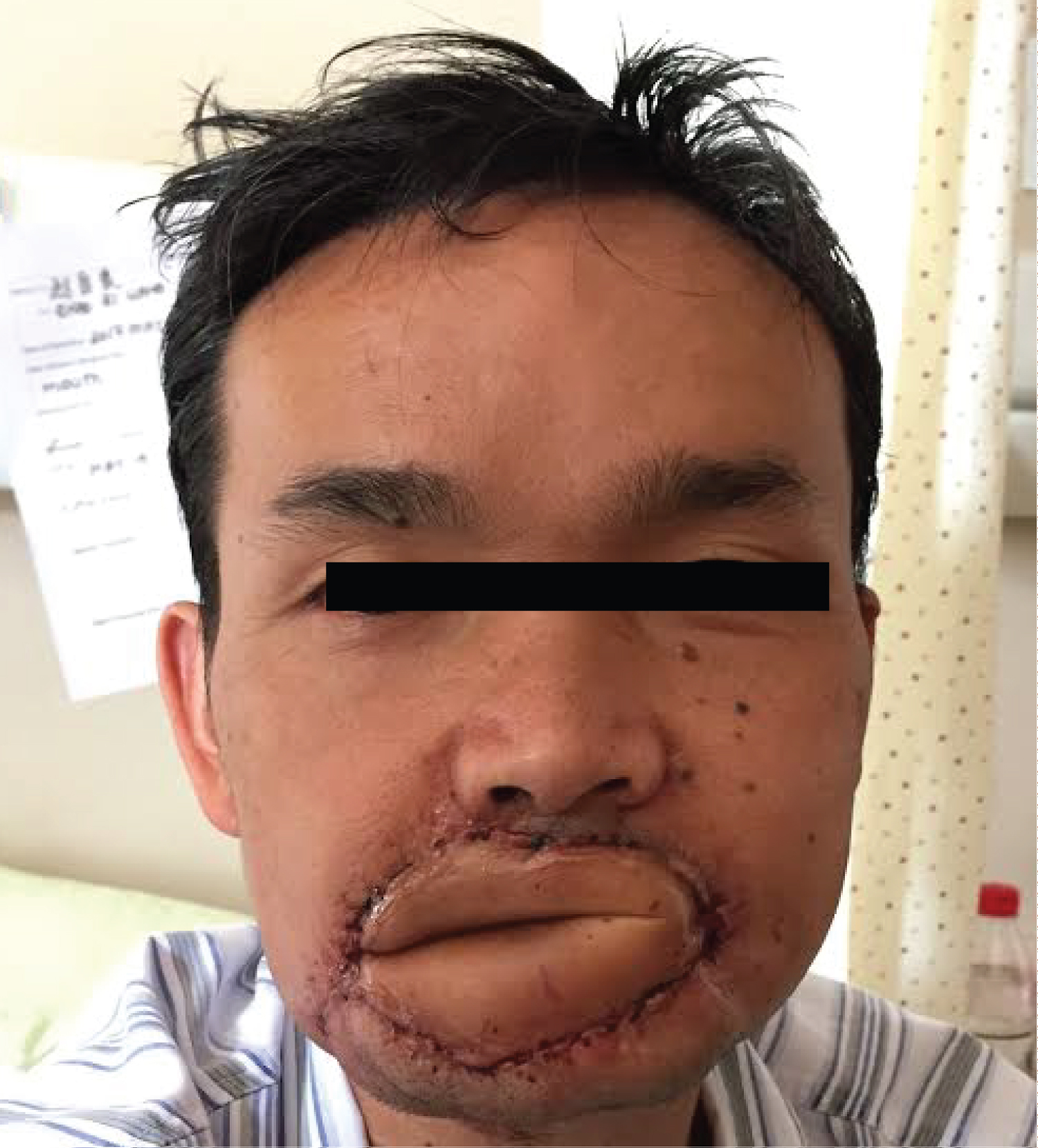Facial reconstructive procedures aim to restore function and appearance to a section of the face affected by trauma, surgery or illness. Lip reconstructions are common procedures due to the mouth's role in numerous key functions, such as speech, chewing and displaying emotion, as well as its contributions to the overall aesthetic of the face. Lip and perioral reconstruction for the purpose of restoring function is more complicated. Selecting the best source of the skin flap used to cover the affected site is dependent on the nature of the injury/defect. Perioral reconstructions are common, and they usually require skin flaps excised from the surrounding area to cover up the affected site [1].
However, for procedures where the lip must be reconstructed, a portion of skin grafted from a distant site away from the recipient site is more suitable. Free tissue grafts, a kind of full thickness skin graft (FTSG), where both the epidermis and dermis are donated are recommended for lip reconstruction due to its usefulness in restoring function and appearance of the lips [2]. Factors to consider when choosing FTSGs include vascular supply and other nutritional requirements, both needed for the skin graft to fully adhere to the recipient site and avoid rejection by the local site [1].
Most lip reconstructions involve an injury or defect in either the upper or lower lip, where local and free flaps are donated to the recipient site [3-5]. However, a case involving a complete lip and perioral reconstruction is rarely documented, if at all. Different from upper/lower lip reconstructions, full lip reconstructions need to ensure that the patient is able to move the lips after surgery, making it more challenging and rarer. This case report documents an extremely rare case where a patient suffered an injury which destroyed the whole lip and surrounding perioral area, affecting its skin and muscular functions. This required a full lip and perioral reconstruction to restore functioning of both the upper and lower lips, followed by cosmetic revision procedures to improve the aesthetic of the lips.
This 42-year-old man suffered an electrical burn when he was 24-years-old. He was working as an electrical apprentice at the time. He touched a live wire and suffered full thickness fourth degree burns involving his upper and lower lips and his masseters muscle. He also lost his left forearm from the accident. He has since been unemployed. He has great difficulty in carrying out his activity of daily living. One of the unfortunate restrictions is his loss of mastication function. Because of the perioral burn and contracture, he has no proper mouth function and has completely loss his upper and lower lips and his oral cavity remained open (Figure 1). He could only consume a soft liquid diet where he has to lie down and drink.
 Figure 1: Patient before contracture release surgery.
View Figure 1
Figure 1: Patient before contracture release surgery.
View Figure 1
In May 2016, he had completed upper and lower lip reconstruction with fold over radial forearm fascial cutaneous flap. His radial artery and vein were anastomosed to his superior thyroid artery and vein.
We utilized a two-team approach to reconstruct his defect. We released the cicatrician scar around his mouth and cheeks. We then prepared the recipient vessels by dissecting and isolating the right superior thyroid artery and vein. The second team raised a radial forearm flap from his right forearm. (He lost his left forearm in the electrical accident). The distal portion of his radial forearm is set at right side of his upper lip and at the left commissure of his reconstructed lip the flap turns 180 degrees and joints the distal part of his flap at his reconstructed right commissure. His radial artery and the vena comitans is anastomosed to the superior artery and vein.
Lips are very complex three-dimensional structures. The main function of the lip is to provide oral competence. It also assists in speech and facial expression. Majority of the orbicularis oris muscle fibers are oriented horizontally from one commissure to the opposite commissure. The orbicularis oris at the commissure also mingle with other muscle fibers in the area called the modiolus. The orbicularis oris closes and purses the lips. The horizontal and oblique fibers tighten and evert the upper lip, respectively. The levator labii superioris, levator anguli oris; the zygomaticus major and minor elevate the lip, and the mentalis, depressor labii inferioris, and the depressor anguli oris depress the lip.
The orbicularis oris closes and purses the lips. The horizontal and oblique fibers tighten and evert the upper lip, respectively. The levator labii superioris, levator anguli oris; the zygomaticus major and minor elevate the lip, and the mentalis, depressor labii inferioris, and the depressor anguli oris depress the lip.
The lips' blood supply is derived from the facial artery. The inferior labial artery supplies the lower lip, and the superior labial artery as well as branches from the angular artery supplies the upper lip. The lips motor innervation is by the buccal and marginal mandibular branches of the facial nerve; the infraorbital nerve V2 and the mental nerve V3 provide sensory innervation to the upper and lower nerve, respectively.
The covering of the lip contains a reddish region surrounding the oral fissure called the vermillion, which is lined with keratinizing glabrous epithelium with numerous sebaceous glands. The vermilion meets the surrounding external skin via the vermiliocutaneous junction and meets the mucosa of the inner lip by the lip vermilion. The skin of the upper lip is comprised of paired philtral columns laterally, the philtrum and tubercle medially, and the white roll at the vermiliocutaneous junction.
Due to the complex anatomical structure of the lips, the best lip reconstruction is to use the adjacent or opposite lip to reconstruct the defect. The second choice is the tissue adjacent to the lip like the cheek, and chin tissue. In this case of complete loss of open upper and lower lip and cicatrician injury to part of the cheek and chin, we need to bring health and significant amount of tissue in order to reconstruct both the upper and lower lips. We decided to reconstruct this complex defect with a radial forearm fold over fascial cutaneous flap with a palmaris longus tendon to suspense the lower lip (Figure 2).
 Figure 2: Patient after contracture release surgery.
View Figure 2
Figure 2: Patient after contracture release surgery.
View Figure 2
After surgery, he has improved oral competence. He can close his lips together (Figure 3). We centralized his lip with the subsequent adjustment. He seems more confident with his new look after the revision. Even though there is a language barrier, the patient was extremely appreciative of the work done by the surgical team for the reconstruction of his mouth.
 Figure 3: Patient after the revision procedure.
View Figure 3
Figure 3: Patient after the revision procedure.
View Figure 3